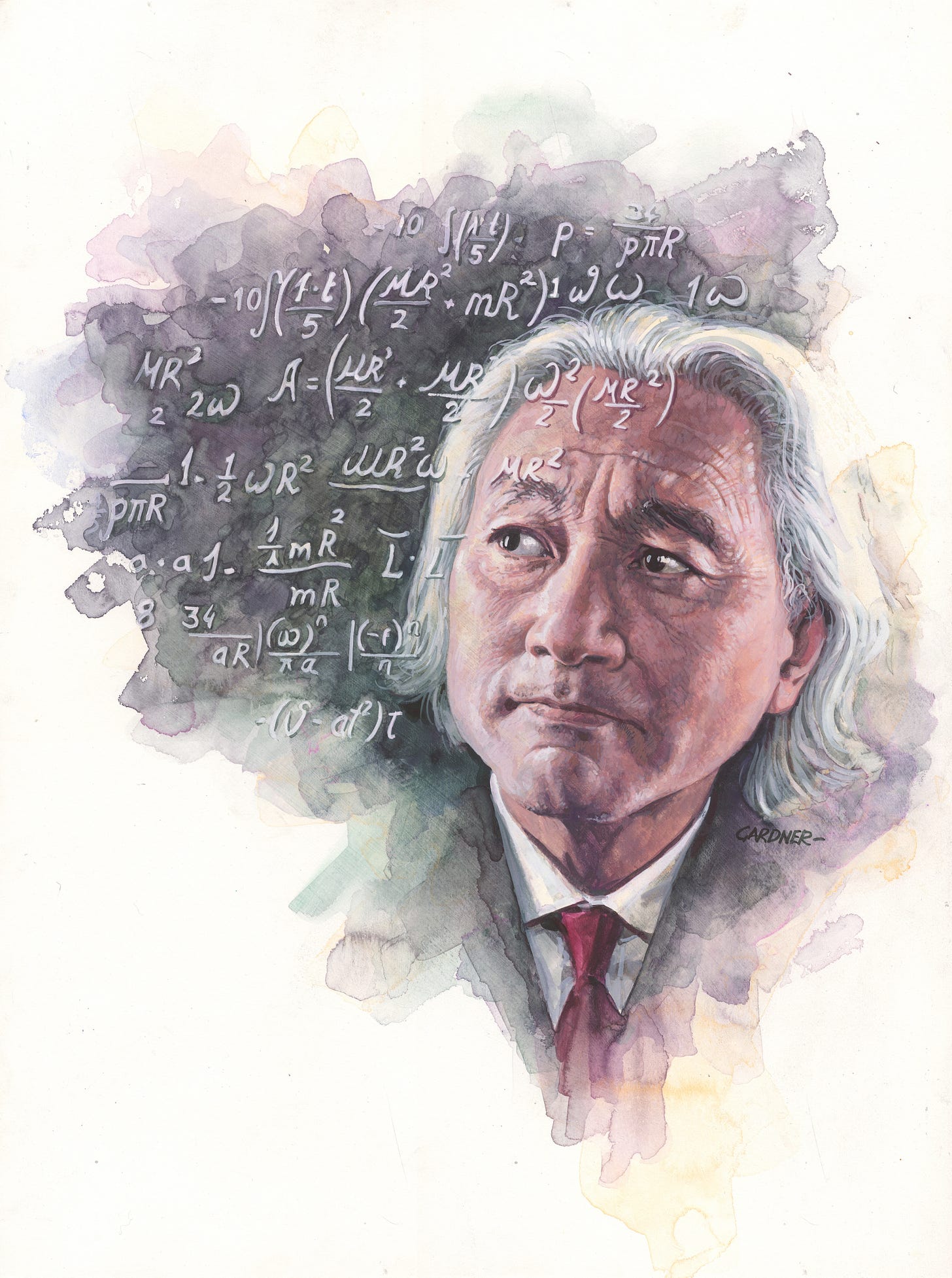
“The human brain has 100 billion neurons, each neuron connected to 10 thousand other neurons. Sitting on your shoulders is the most complicated object in the known universe.” -Michio Kaku
This quote, from physicist Michio Kaku, is one of the most thrilling bits of information I’ve ever read. I’ve been interested in neuroscience and brain anatomy since my university days, when I took a cognitive psychology class to round out my English degree, and though there’ve been times when I felt like there was nothing but grey sludge between my ears, when I stop to think about the vast network of neurons and synapses at work in even the simplest of activities, I’m filled with a profound sense of awe. Our brains are so complex that we may never be able to fully map them; as philosopher Emerson M. Pugh wrote, “if the human brain were so simple that we could understand it, we would be so simple that we couldn’t”.1 But we can understand some of the basics, so in this article I’m going to boil this most complicated subject down to its essentials. I know not everyone is as fascinated by the brain as I am, so this will be a very brief primer, laying the foundation for some of the more detailed neuroscience of addiction topics I’ll be looking at in the future.
The first thing to understand is how signals pass from one brain cell to another. Our brain is an electrochemical system, which means that its communication is partly electrical, and partly chemical. Without getting too far into the weeds of brain structure, we can picture a brain cell (or neuron) as something like a tree, with branches (known as dendrites) reaching in one direction, and a long trunk with roots (axons) reaching in another direction.
Any given branch of one tree almost, but not quite, touches the root of a neighbouring tree, and that tiny gap between root and branch, called a synapse, is where communication happens. An electrical impulse travels down the trunk of the tree to the root, where a little bubble of chemicals is released, and that bubble jumps across the gap and attaches to the branch of the next tree. It’s a bit like a relay race, with electrical “action potentials” passing the baton to chemical messengers, which pass it back to electrical signals on the far side of the synapse. Once enough of these relays has occurred you might raise your hand to scratch your nose, or swallow a bite of food, or suddenly remember an appointment you’d forgotten.
At the far side of the synaptic gap, the branch that receives the bubble of chemicals is covered in tiny slots like keyholes, and the chemicals act like tiny keys. These keyholes are the receptors. The chemicals, called neurotransmitters, fit themselves into their appropriate locks, and instruct the second tree to transmit the electrical signal down its own trunk to its roots, releasing more neurotransmitters, and so on in a cascade that results in a huge network of trees lighting up (or “firing”). Depending on the chemicals released, another option is that they’ll instruct the neighbouring tree not to fire, or to fire more weakly, and the specific, interacting patterns of firing and not firing across 100 billion intricately networked brain cells, forming 100 trillion synaptic connections,2 is the basis of all brain activity.
Glutamate and Gamma-Aminobutyric Acid (GABA) are a couple of important neurotransmitters that have opposing roles in the brain. Glutamate is a major excitatory neurotransmitter, which means that it tries to cause a neuron to fire, or send an electrical impulse down its trunk to its neighbouring brain cells. GABA, by contrast, does the opposite: it’s inhibitory, meaning it instructs the branch not to send the impulse to its neighbours, and so its presence decreases the likelihood that a brain cell will fire. A very simple way to look at these two effects is that glutamate presses on the gas pedal, while GABA presses on the brakes: more pressure on the gas means more firing, while more pressure on the brake means less firing.
In everyday life, glutamate is working to make parts of your brain more active, for example in tasks such as learning and memory: when you’re learning algebra, glutamate is causing neurons to fire in the appropriate region of the brain, and over time they form into networks that you’ll call on every time you do algebra in the future. The more complex this network becomes, the more brain cells get wired together, the better you’ll be at solving algebra equations. At the same time, GABA is working to put the brakes on other parts of the brain, such as the urge to go play video games instead of doing your math homework. The more practice you have at suppressing this urge, the stronger your impulse control becomes, and the easier it is to focus on your algebra and save the video games for a more appropriate time. The growth and strengthening of this GABA-ergic control over the frontal lobes (the so-called “adult brain”) is a key stage in development, taking us from our impulsive childhood and teenage years into full-fledged, responsible adulthood.3

This brings us back to my title quote: “what fires together, wires together”.4 Your brain is constantly forming and reforming new networks of root and branch, strengthening them or weakening them depending on your habits and behaviours, and the more a certain behaviour is repeated, the more tightly linked the underlying brain cells become to one another. This is known as neuroplasticity, the brain’s ability to change itself as we grow and learn and forget and develop. It’s normal to see a flourishing of new connections as we start learning a new skill, and then a subsequent pruning back or loss of connections as time goes on; this is the skill becoming automatic, needing fewer of the brain’s resources to carry out, and we see a similar flourishing and pruning through development from an infant to an adult. The infant, child, and adolescent brains - having so many skills to learn in these important early years - have many more networked connections relative to the adult brain. These are thinned out in early adulthood, as character and habits become more concrete. The essential part of the network hardens, as it were, into a deeply-wired structure that can last your entire life (think of how easy it is to recall your childhood phone number, even if you haven’t dialled it in decades). This can decay with disuse, for example if you took piano lessons for years and then stopped; when you pick it back up, you’ll have lost the automaticity you used to enjoy, and it’ll take practice to get back to that stage, but it won’t be as difficult to learn the second time around, because the remains of that network are still present.
I’ve written elsewhere about how dopamine, the neurotransmitter associated with motivation, adds impetus to the formation of learned habits; for me, the point of learning about these concepts is to gain power and agency over the pathways we forge in our neural connections. When allowed to run rampant, dopamine can lead us down some dark paths, into the waters of compulsion and addiction. But there is another aspect of dopamine - what’s known as control dopamine - that can counteract the lure of cheap ‘desire’ dopamine by activating dopamine receptors in different parts of the brain.5 Armed with these concepts, we can start to cultivate the deep structure of our minds in a way that enhances, rather than depletes, our sense of satisfaction and fulfillment, carefully choosing the paths that lead us to our best selves. It will take some work, and dedication to excavating and bypassing the old wiring that holds us back, but the reward is well worth the effort.
Further reading:
Sending Information: Synapses and Neurotransmission
If you prefer a video lesson, check out this Crash Course video featuring the incomparable Hank Green!
Efforts to map the brain are ongoing, and with advances in computer technology and complex systems analysis, scientists are making great strides towards understanding neuronal networks in greater detail. Still, “studies like these won’t let scientists completely decipher the human brain’s complexity for a very long time. The nematode worm C. elegans offers a cautionary tale. More than 20 years ago researchers finished mapping every connection bridging all its 302 neurons. But investigators still do not know how that simple network gives rise to a working nervous system”.
Shatz CJ. 1992. The developing brain. Sci. Am. 267, 60–67.
I’ll discuss the role of control dopamine in more detail in a future post.







Love that Emerson Pugh quote! I'm fascinated by the brain, particularly how things can go right most of the time while other things go awry. My father has Parkinson's, so I've been learning a lot about dopamine there. My daughter has epilepsy, which also brings neurology front and center for me. And I recently learned I'm an aphant (aphantasia: inability to visualize a.k.a. a blind mind's eye). The brain has so many ways of working and not working, the subject matter is limitless 🤯🤓